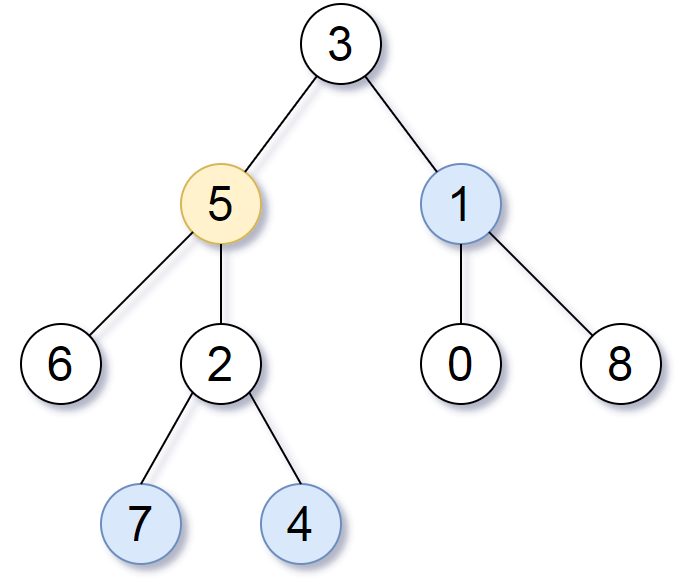https://leetcode.com/problems/all-nodes-distance-k-in-binary-tree/discuss/143752/JAVA-Graph-+-BFS https://www.youtube.com/watch?v=o1siL8eKCos class Solution { Map<TreeNode, List<TreeNode>> map = new HashMap(); //here can also use Map<TreeNode, TreeNode> to only store the child - parent mapping, since parent-child mapping is inherent in the tree structure public List<Integer> distanceK(TreeNode root, TreeNode target, int K) { List<Integer> res = new ArrayList<Integer> (); if (root == null || K < 0) return res; buildMap(root, null); if (!map.containsKey(target)) return res; Set<TreeNode> visited = new HashSet<TreeNode>(); Queue<TreeNode> q = new LinkedList<TreeNode>(); q.add(target); visited.add(target); while (!q.isEmpty()) { int size = q.size(); if (K == 0) { for (int i = 0; i < size ; i++) res.add(q.poll().val); return res; } for (int i = 0; i < size; i++) { TreeNode node = q.poll(); for (TreeNode next : map.get(node)) { if(visited.add(next)){ q.offer(next); } } } K--; } return res; } private void buildMap(TreeNode node, TreeNode parent) { if (node == null) return; if (!map.containsKey(node)) { map.put(node, new ArrayList<TreeNode>()); if (parent != null) { map.get(node).add(parent); map.get(parent).add(node) ; } buildMap(node.left, node); buildMap(node.right, node); } } }
We are given a binary tree (with root node root), a target node, and an integer value K.
Return a list of the values of all nodes that have a distance K from the target node. The answer can be returned in any order.
Example 1:
Input: root = [3,5,1,6,2,0,8,null,null,7,4], target = 5, K = 2
Output: [7,4,1]
Explanation:
The nodes that are a distance 2 from the target node (with value 5)
have values 7, 4, and 1.
 Note that the inputs "root" and "target" are actually TreeNodes.
The descriptions of the inputs above are just serializations of these objects.
Note that the inputs "root" and "target" are actually TreeNodes.
The descriptions of the inputs above are just serializations of these objects.
Note:
0 <= node.val <= 500.target node is a node in the tree.0 <= K <= 1000.863. All Nodes Distance K in Binary Tree
原文:https://www.cnblogs.com/tobeabetterpig/p/9929780.html